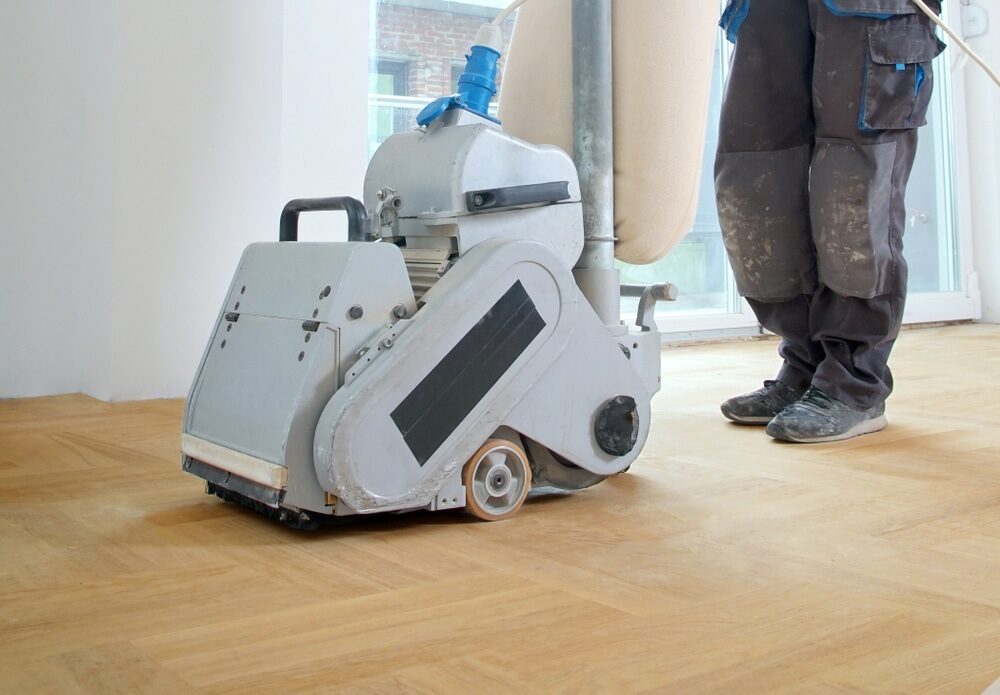London:
Nationwide:
The Benefits of Hand Sanding Wood Floors
Posted on January 11, 2024
Floor sanding techniques
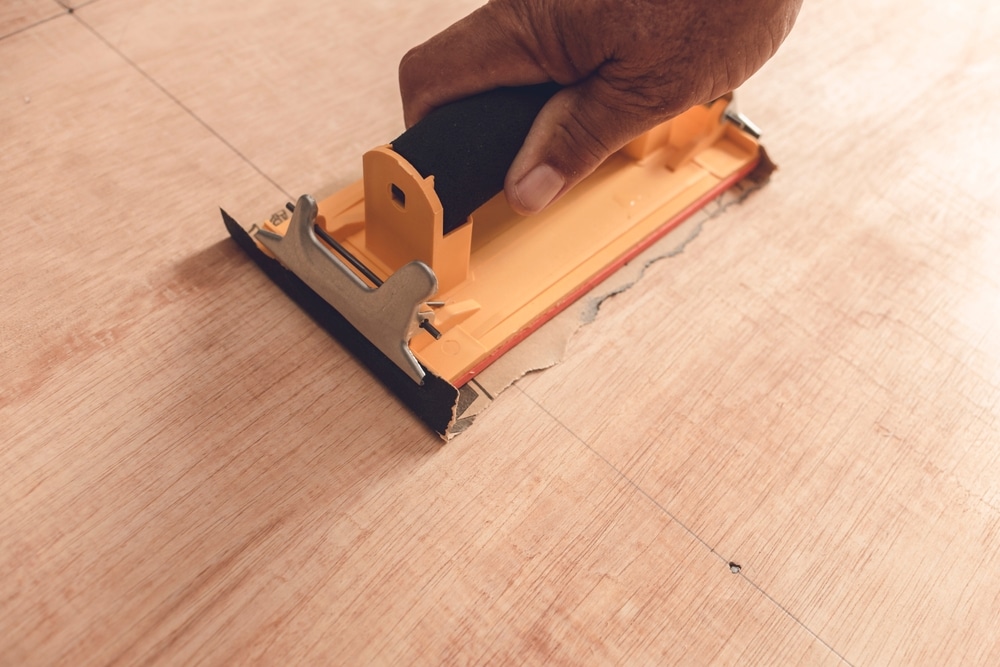
The Art of Hand Sanding Wood Floors: Preserving Beauty and Integrity
In the realm of wood floor restoration, hand sanding emerges as a time-honoured technique, often overshadowed by the swiftness of modern machinery. This traditional method, steeped in craftsmanship, offers a meticulous approach to preserving and enhancing the natural beauty of wooden floors. Wood floor hand sanding, a practice that dates back centuries, requires not only skill and patience but also an appreciation for the finer details that define quality woodwork.
The process of hand sanding involves manually rubbing the surface of the wood with various grades of sandpaper. This gradual, layer-by-layer approach ensures a level of control and precision that machines struggle to replicate. One of the key benefits of this method is the ability to reach into nooks, crannies, and edges that machines often miss or damage. This attention to detail is particularly crucial in heritage homes, where preserving the original character of the flooring is paramount.
Hand sanding is not just a technique; it’s an art form that respects the wood’s natural grain and patterns. Unlike machine sanding, which can sometimes leave the wood looking uniformly bland, hand sanding maintains the wood’s unique characteristics. Each stroke of the sandpaper is thoughtfully applied, taking into consideration the direction of the grain, the presence of knots, and the subtle undulations that give the wood its character.
For enthusiasts of woodwork and those with a penchant for DIY, wood floor hand sanding offers an engaging and rewarding experience. It connects the individual to the material in a way that machines cannot, allowing for a deeper understanding and appreciation of the wood’s qualities. Furthermore, hand sanding does not require expensive machinery or complex setups, making it accessible to anyone willing to invest time and effort in their wood floors hand sanding.
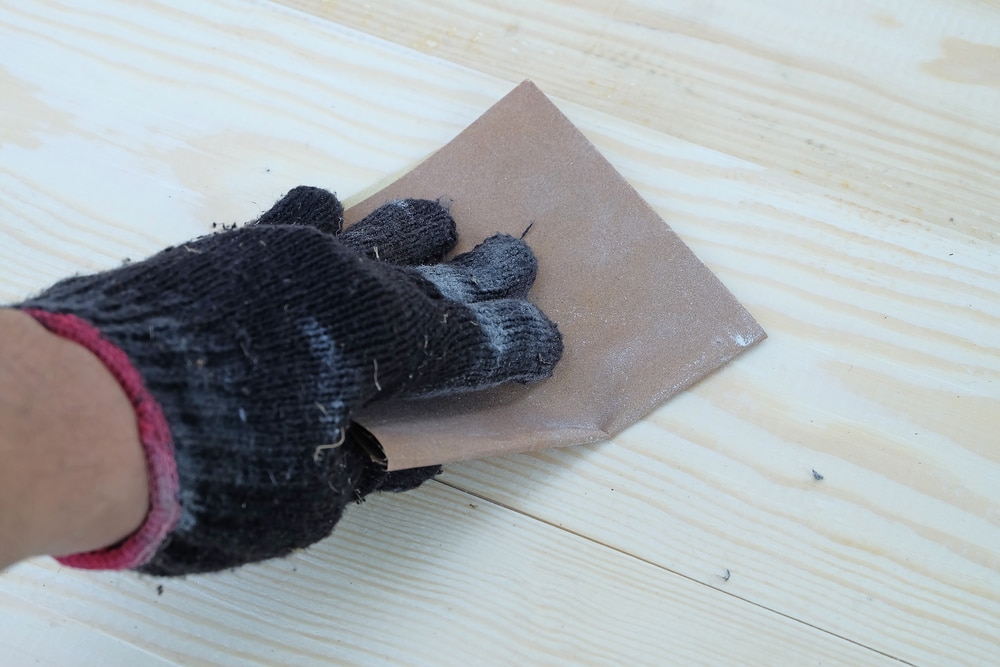
Advantages of hand sanding
Hand-sanding wood floors, a technique often regarded as laborious and time-consuming, actually presents a host of advantages that are worth considering. These benefits not only enhance the appearance of the wood but also contribute to the longevity and quality of the flooring. Here, we explore the myriad benefits that hand sanding offers over its mechanical counterpart.
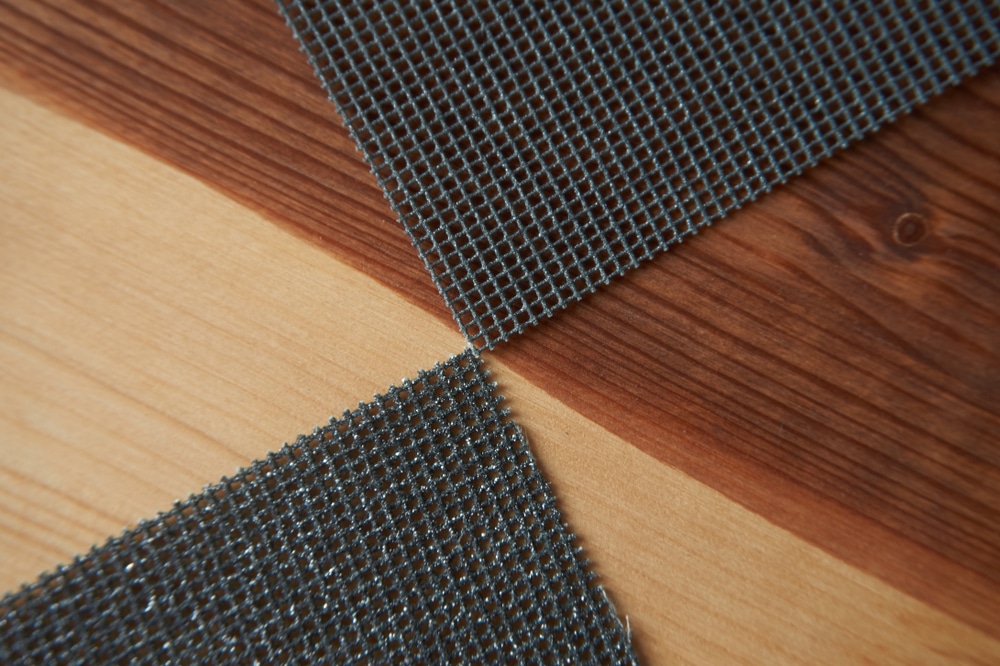
1. Unparalleled Precision and Control
One of the most significant advantages of hand sanding is the level of control it offers. When sanding by hand, you have the ability to apply varying degrees of pressure and to focus on specific areas that need more attention. This precision ensures that the sanding process is even and thorough, reducing the risk of gouging or uneven surfaces that can occur with machine sanding.
2. Accessibility and Manoeuvrability
Hand sanding tools are simple and easy to manoeuvre, allowing for greater access to tight spaces and edges. This ensures that every corner and crevice of the floor receives equal attention, maintaining a consistent finish throughout.
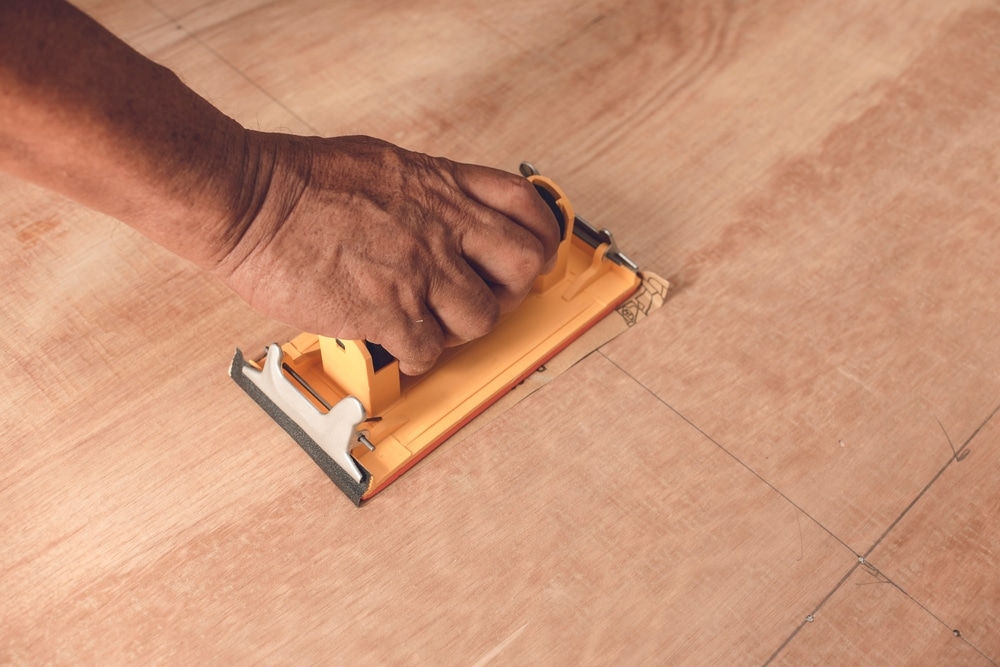
3. Preservation of Character
For antique or intricate wood floors, hand sanding is especially beneficial. It allows for gentle and careful sanding that preserves the wood’s unique characteristics, such as grain patterns, inlays, and other decorative elements. This is particularly important in heritage homes, where retaining the original charm and character of the flooring is essential.
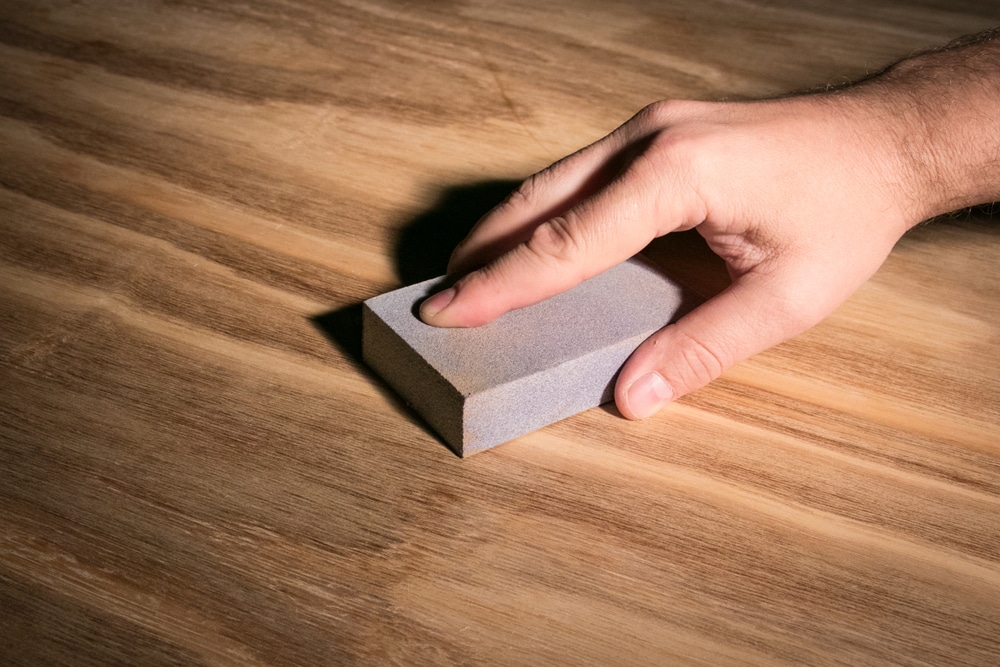
4. Reduced dust and noise
Hand sanding is a quieter and less dusty process compared to machine sanding. This is not only more pleasant but also healthier, reducing the amount of airborne dust particles that can be harmful when inhaled. It’s also more conducive to working in lived-in spaces, as it causes minimal disruption.
5. Enhanced Connection with the Material
Hand-sanding provides a tactile experience that brings one closer to the material. This hands-on approach fosters a deeper appreciation of the wood’s natural beauty and leads to more thoughtful and intentional work.
6. Cost-Effective and Eco-Friendly
Without the need for expensive machinery, hand sanding is a cost-effective method for floor restoration. It’s also more environmentally friendly, as it requires less energy and produces fewer emissions than machine sanding.

Preserving the Authenticity of Your Floors
In the journey of maintaining and restoring wood floors, preserving their authenticity is paramount. Hand sanding plays a pivotal role in this regard, offering a respectful and delicate approach that honours the floor’s original character and history. This section delves into how hand sanding contributes to maintaining the authenticity and integrity of wood floors.
Maintaining original features
Wood floors in historic or older homes often come with unique features, be they intricate patterns, antique inlays, or a specific grain orientation. Hand sanding, with its gentle touch, ensures these features are not just preserved but highlighted. Unlike aggressive machine sanding, which can sometimes erase or diminish these details, hand sanding nurtures and accentuates them, allowing the floor’s original beauty to shine through.
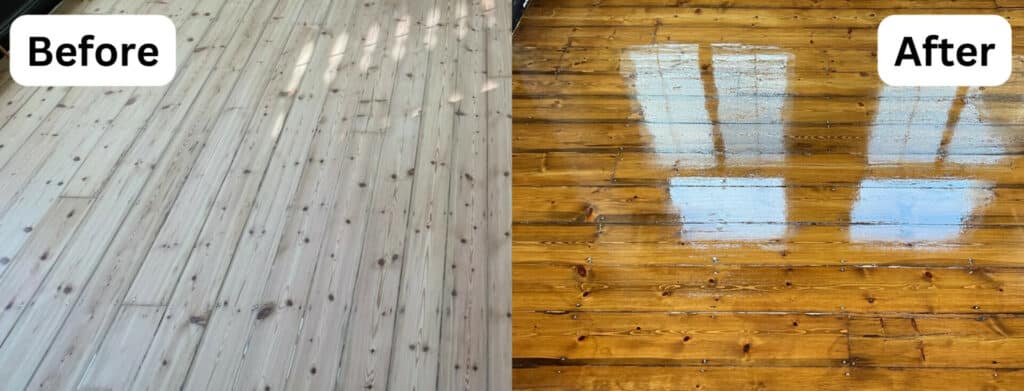
Gentle on Age-Old Wood
Antique wood floors require a level of care that considers their age and fragility. Hand sanding is a non-invasive method that gently removes the old finish and surface damage without compromising the wood’s structural integrity. This is especially important for floors that have already undergone several rounds of wood floor sanding and refinishing throughout their lifetime.
Customised Approach for Each Floor
Every wood floor has its own story, character, and set of quirks. Hand sanding allows for a customised approach, where the technique and level of sanding can be adjusted according to the floor’s specific needs. This bespoke treatment ensures that the floor’s authentic charm is not only preserved but also enhanced.
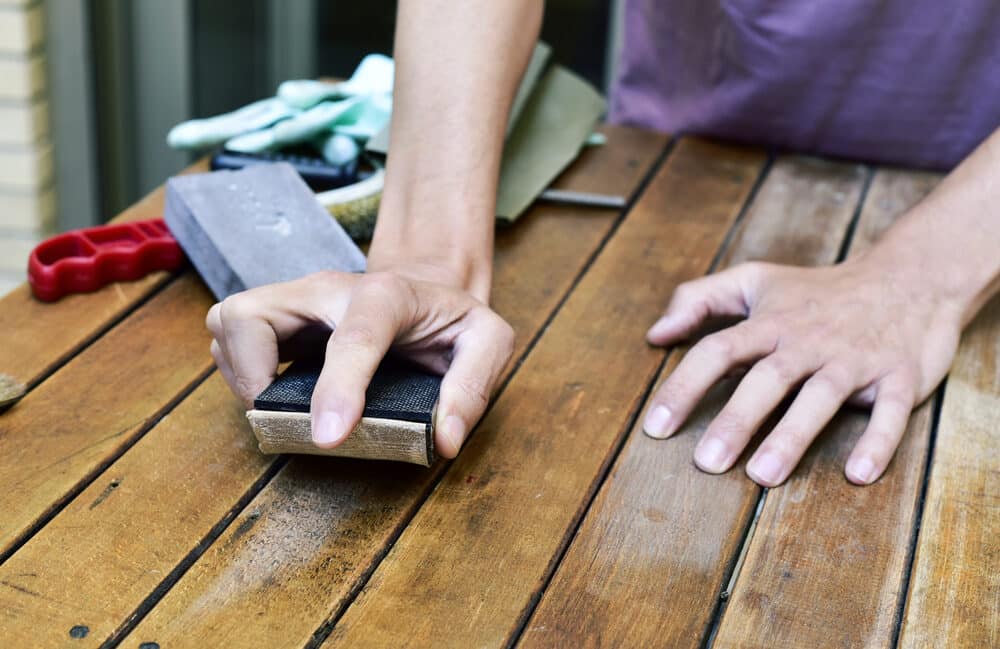
Avoiding Over-Sanding
One of the risks with machine sanding is the tendency to over-sand, which can thin the wood too much, reducing its lifespan. Hand sanding provides a more controlled approach, removing only the necessary amount of surface material. This careful process helps preserve the wood’s thickness and strength for years to come.
Highlighting the wood’s natural patina
Over time, wood develops a patina—a sheen or colouring that adds to its character. Hand sanding is excellent for bringing out this natural patina, enhancing the floor’s aesthetic appeal while maintaining its historical accuracy.
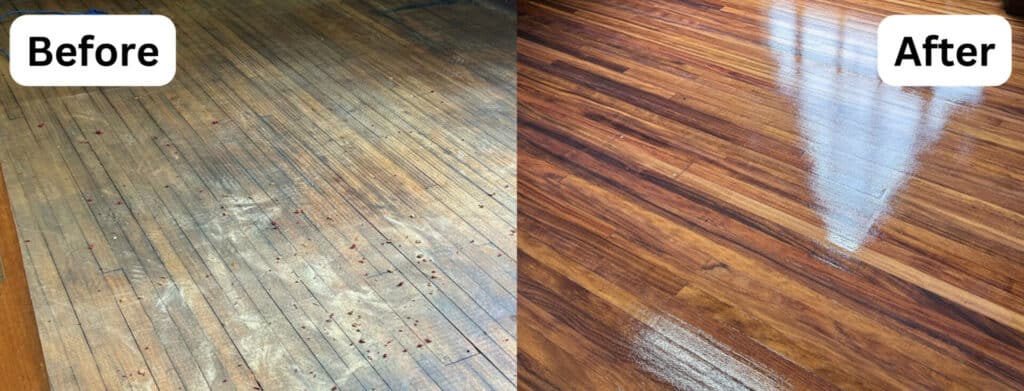
The Eco-Friendly Choice
In an era where environmental consciousness is paramount, choosing eco-friendly home improvement methods is more important than ever. Hand-sanding wood floors emerges as an environmentally responsible option, aligning with sustainable practices and reducing the ecological footprint. This section explores the various aspects that make hand sanding an eco-friendly choice for floor restoration.
Minimal energy consumption
One of the most significant environmental benefits of hand sanding is its low energy usage. Unlike machine sanding, which relies on electricity to power sanders, hand sanding requires only manual effort. This reduction in energy consumption is a step towards more sustainable and environmentally friendly home maintenance practices.

Reduced emissions and pollution
Hand sanding does not generate the emissions associated with powered sanders. Machines not only consume energy but also release carbon emissions, contributing to air pollution. By opting for hand sanding, you significantly reduce the release of these harmful pollutants, making it a greener choice for your home and the planet.
Lower dust production
While any form of sanding produces dust, hand sanding tends to generate less airborne dust compared to its mechanical counterpart. This reduced dust production is not only better for indoor air quality but also minimises the amount of particulate matter released into the environment. Furthermore, with less dust, there’s a decreased need for extensive cleaning post-sanding, saving water and cleaning products.
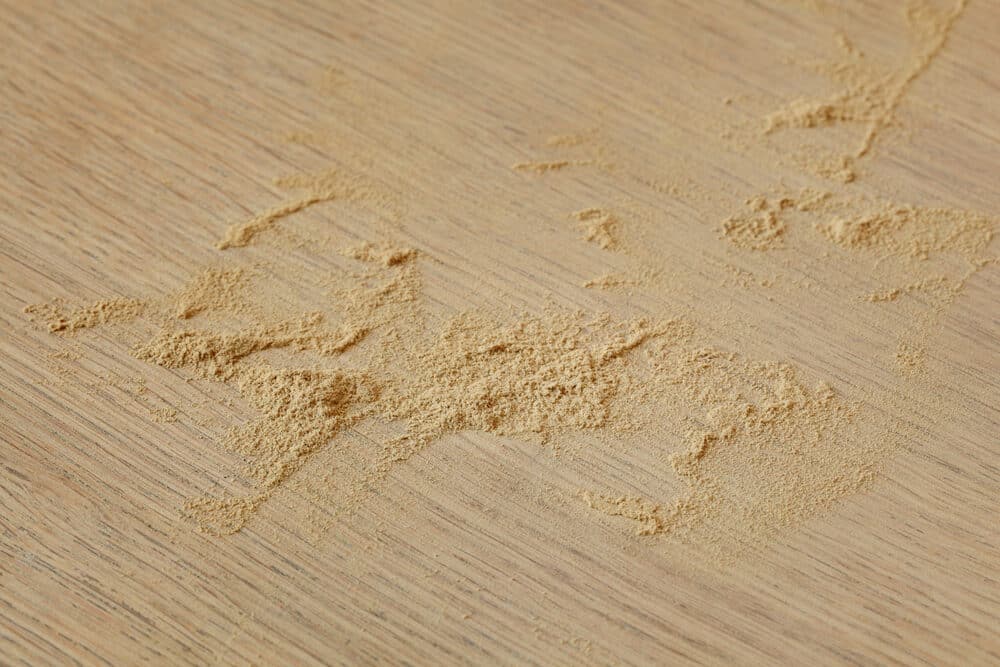
Preservation of Wood Resources
Hand sanding allows for a more controlled and conservative approach to removing the top layers of wood. This precision ensures that only the necessary amount of wood is sanded away, helping to preserve the material for longer. In contrast, machine sanding can often remove more wood than necessary, leading to a quicker depletion of this valuable resource.
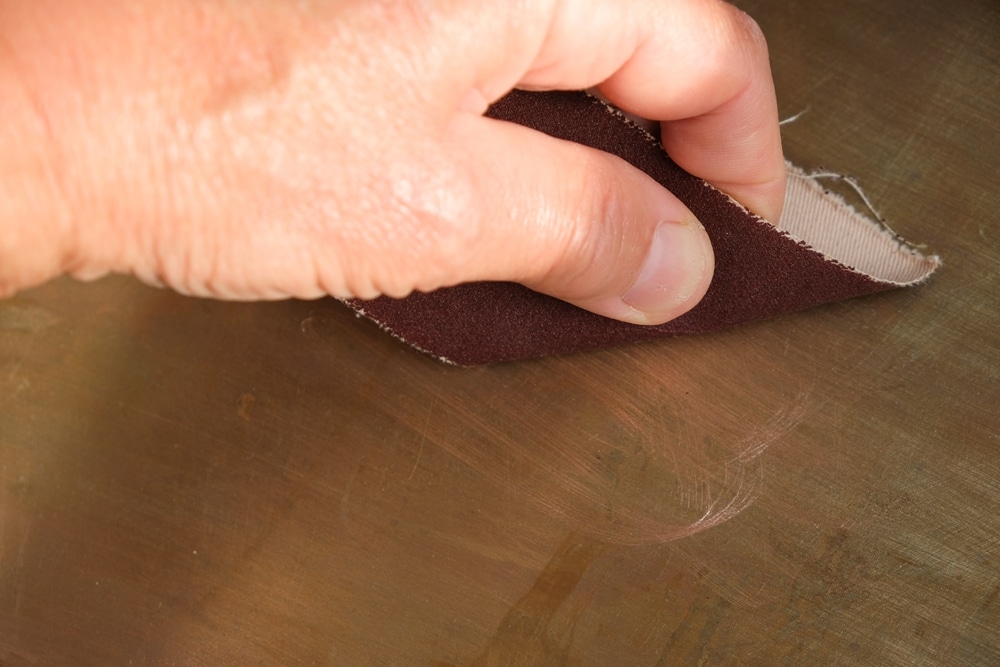
Avoidance of Chemical Strippers
In some floor restoration projects, chemical strippers are used to remove old finishes before sanding. Hand sanding can often eliminate the need for these harsh chemicals, as it can effectively remove finishes without them. By avoiding these chemicals, hand sanding contributes to a healthier, more environmentally friendly process.
Supporting Traditional Craftsmanship
Choosing hand sanding supports traditional craftsmanship and techniques, which are often more sustainable than mass-produced, machine-driven methods. This support helps keep these eco-friendly practices alive and encourages a more thoughtful, less wasteful approach to home improvement.
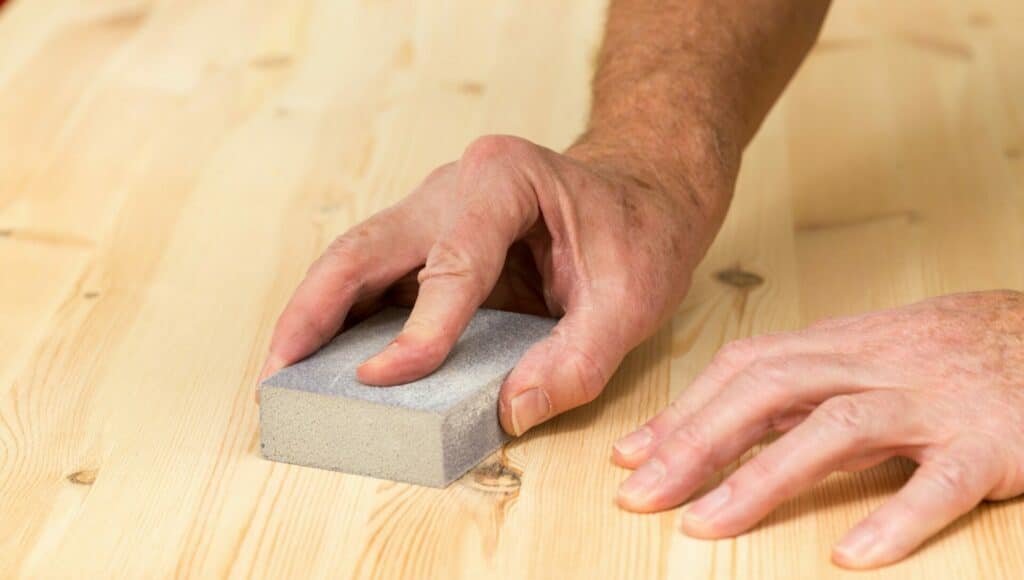
Enhancing the Lifespan of Wood Floors
When it comes to the longevity of wood floors, the method of sanding plays a crucial role. Hand sanding, often seen as a more traditional approach, significantly contributes to extending the lifespan of wood floors. This section explores how this meticulous and careful method not only preserves but also enhances the durability of wooden flooring.
1. Gentle Removal of Top Layers
Hand sanding involves the gradual and gentle removal of the top layers of the wood. This careful process avoids the aggressive stripping that can occur with machine sanding, which often removes more wood than necessary. By preserving more of the wood, hand sanding extends the floor’s life, ensuring that it can withstand multiple refinishing processes over the years.
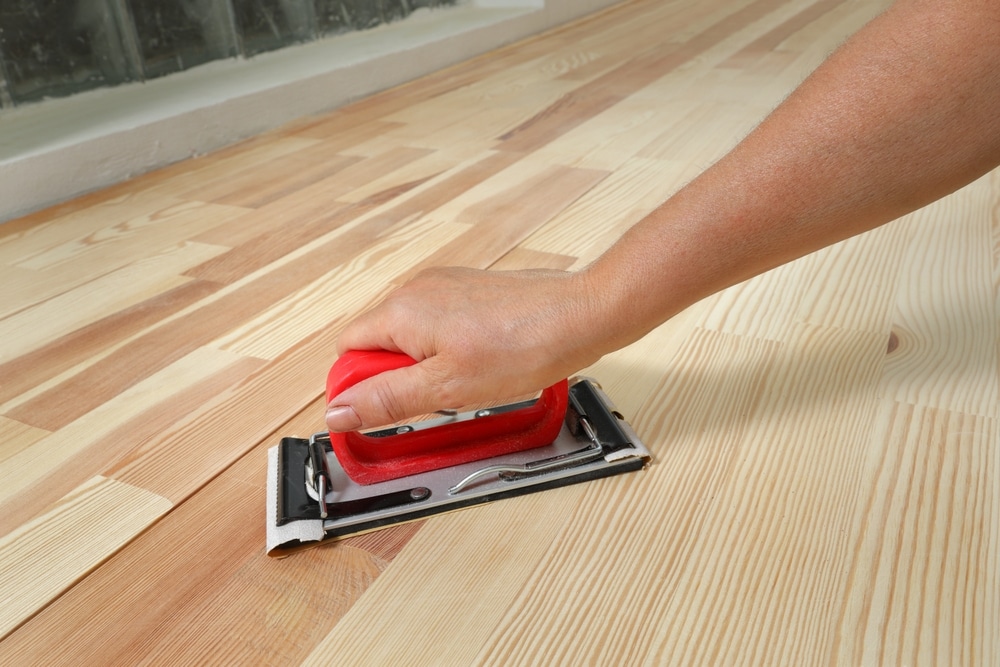
2. Precise Thickness Control
A key aspect of extending the life of wood floors is maintaining their thickness and structural integrity. wood floor Hand-sanding offers unparalleled control over how much wood is removed. This precision ensures that the floors are not over-sanded, a common problem with machines that can weaken the wood and shorten its lifespan.
3. Enhanced Protection
Hand sanding allows for a more uniform and smooth finish, which is essential for the even application of protective sealants and finishes. A well-sanded floor ensures that sealants adhere properly, offering better protection against moisture, wear, and tear. This enhanced protection is vital to prolonging the life of the floors.
4. Preservation of Original Features
For older or historic wood floors, preserving their original features is crucial. Hand-sanding, with its ability to delicately handle intricate patterns and designs, ensures that these unique characteristics are not lost. This preservation is not just about aesthetics; it’s about maintaining the structural and historical integrity of the flooring, which is integral to its longevity.
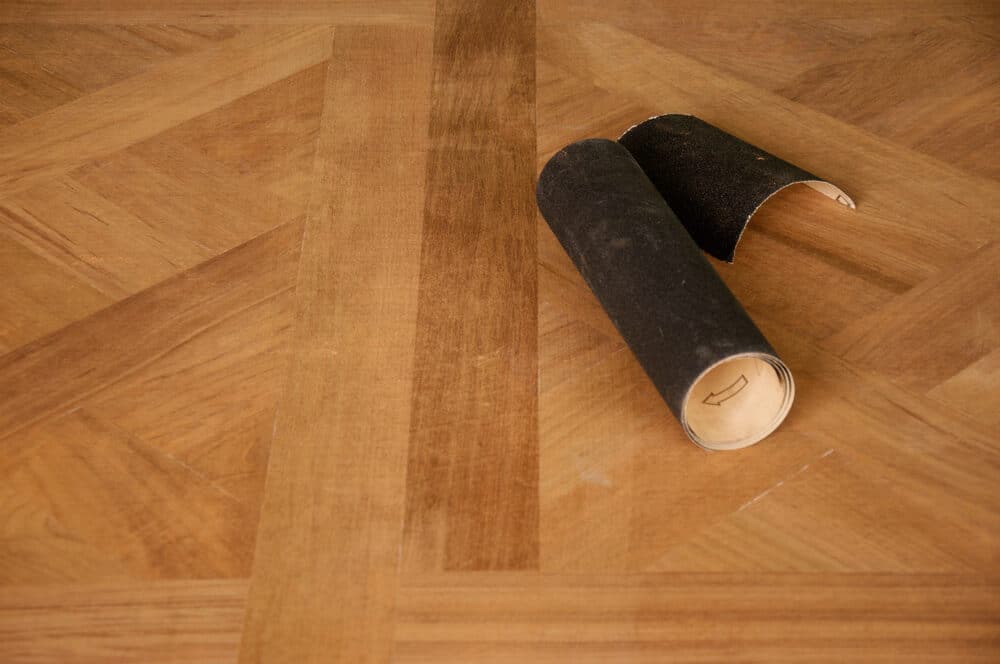
5. Preventing Damage from Over-Sanding
Machine sanding can sometimes lead to accidental damage, such as uneven surfaces, dips, or even cracks. Hand sanding minimises these risks, providing a more controlled approach that safeguards the floor from such potential damage. By preventing these issues, hand sanding helps maintain the floor’s stability and durability.
6. Customised Care for Different Wood Types
Different wood types have varying levels of hardness and resilience. Hand sanding allows for a tailored approach where the sanding technique can be adjusted to suit the specific type of wood. This customised care is essential in ensuring that each floor is treated in a way that best preserves its strength and longevity.
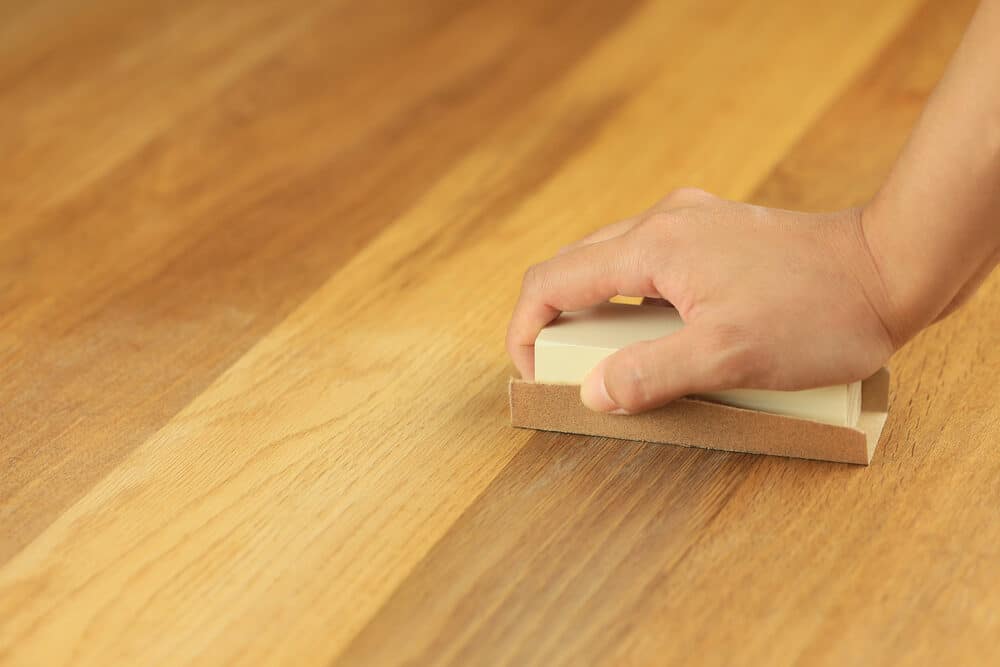
Hand Sanding vs. Machine Sanding: A Comparative Analysis
The debate between hand sanding and machine sanding in wood floor restoration is an ongoing one, with each method having its proponents and critics. To make an informed decision, it’s essential to understand the differences, benefits, and limitations of each technique. This comparative analysis aims to shed light on how hand sanding contrasts with machine sanding, helping you determine the best approach for your flooring needs.
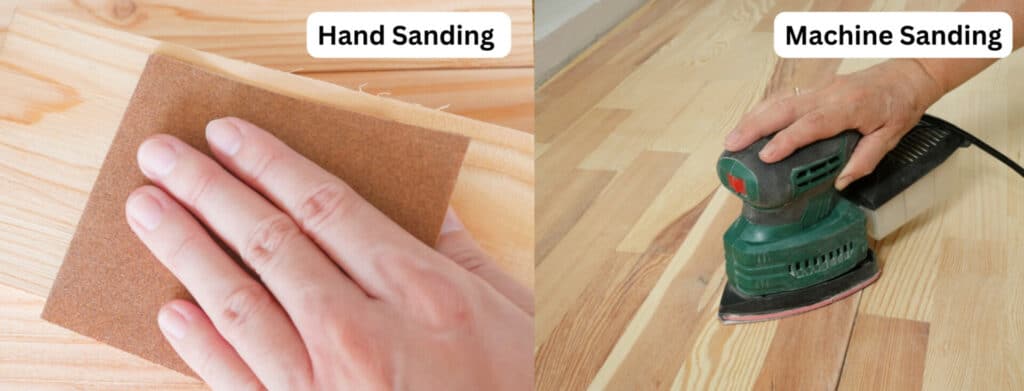
Precision and control
- Hand sanding offers unmatched precision and control. The manual process allows for careful attention to detail, especially around edges and in hard-to-reach areas.
- Machine Sanding: While efficient, machines can lack the finesse and accuracy of hand sanding. They can be more challenging to control, especially for novices, leading to uneven sanding or damage to the wood.
Time and Efficiency
- Hand sanding: This is a more time-consuming process, requiring patience and effort. It’s best suited for smaller areas or projects where detail is paramount.
- Machine sanding is much faster than hand sanding, making it ideal for larger areas. Machines can cover extensive floor spaces in a fraction of the time it takes to sand by hand.
Finish Quality
- Hand sanding produces a smooth, even finish that respects the wood’s natural grain and character. Ideal for fine or delicate work, especially on heritage or antique floors.
- Machine Sanding: Can provide a uniform finish quickly but may sometimes leave marks or patterns, especially if the sander is not handled correctly.
Environmental Impact
- Hand sanding is more environmentally friendly due to minimal energy usage and lower dust production. It’s a greener choice for eco-conscious homeowners.
- Machine sanding requires electricity, and high-powered machines can generate significant amounts of dust, impacting indoor air quality and requiring more cleanup.
Suitability for Different Floor Conditions
- Hand sanding is excellent for delicate or antique floors that require a gentle touch. It’s also beneficial for floors with intricate designs or edges.
- Machine sanding is better suited for floors in relatively good condition that need straightforward refinishing. Not ideal for floors with significant damage or those that require detailed work.
Skill Level Required
- Hand sanding is more accessible for DIY enthusiasts, as it requires basic tools and can be learned with some practice.
- Machine sanding requires experience and skill to handle the equipment properly. There is a risk of damaging the floor if the machine is not used correctly.
Cost Implications
- Hand sanding is generally more cost-effective, especially for small projects, as it requires fewer tools and no machinery.
- Machine sanding involves the cost of renting or purchasing machinery, which can be significant. However, the time saved can offset this for larger projects.
Health and safety
- Hand sanding is safer and healthier due to lower dust production and the absence of machine-related risks.
- Machine sanding can pose health risks due to higher dust levels and the physical demands of handling heavy equipment.
Tips for Effective Hand Sanding
Hand-sanding wood floors is a skill that requires patience, attention to detail, and the right techniques to achieve a smooth, even finish. Whether you’re a DIY enthusiast or a seasoned woodworker, these tips will help you master the art of hand sanding and ensure your wood floors are beautifully restored.
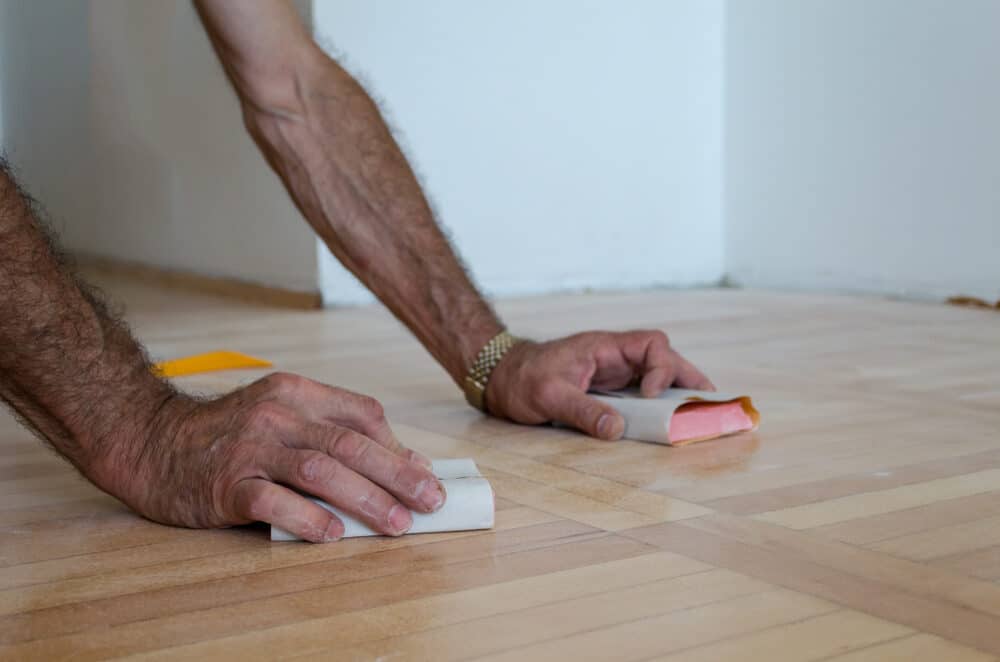
1. Choose the Right Sandpaper
- Grit Selection: Start with a coarser grit to remove old finishes and imperfections, then progressively move to finer grits for a smooth finish.
- Quality Matters: Invest in high-quality sandpaper. Better quality means more effective sanding and less paper used in the long run.
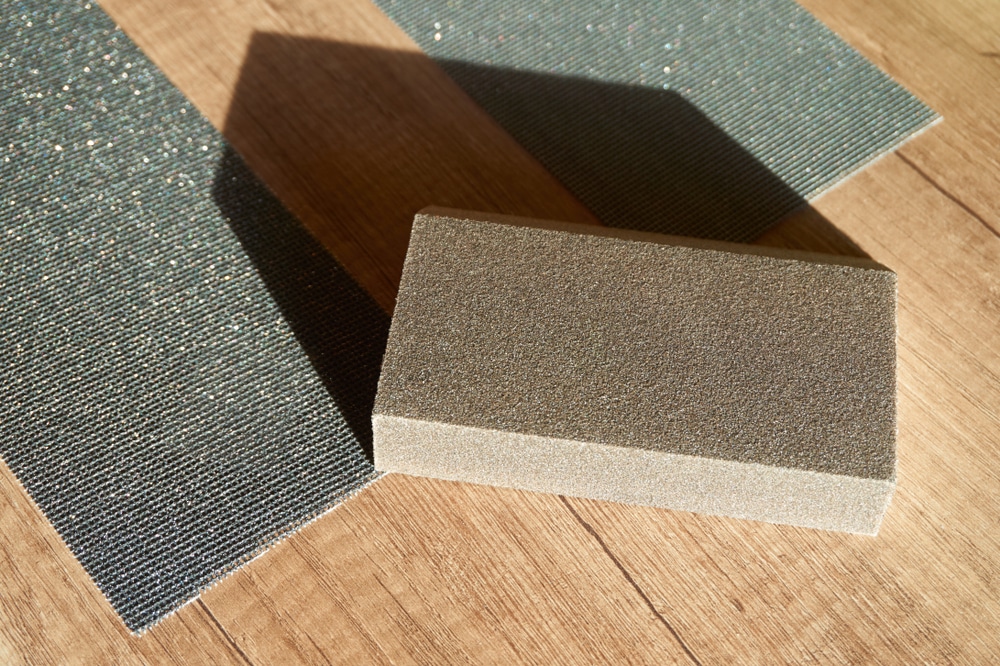
2. Sand with the grain
- Always sand in the direction of the wood grain. Sanding against the grain can create scratches and damage the wood’s natural appearance.
3. Use a sanding block
- A sanding block helps apply even pressure and prevents the sandpaper from wrinkling or tearing. It also makes it easier to handle and manoeuvre the sandpaper.
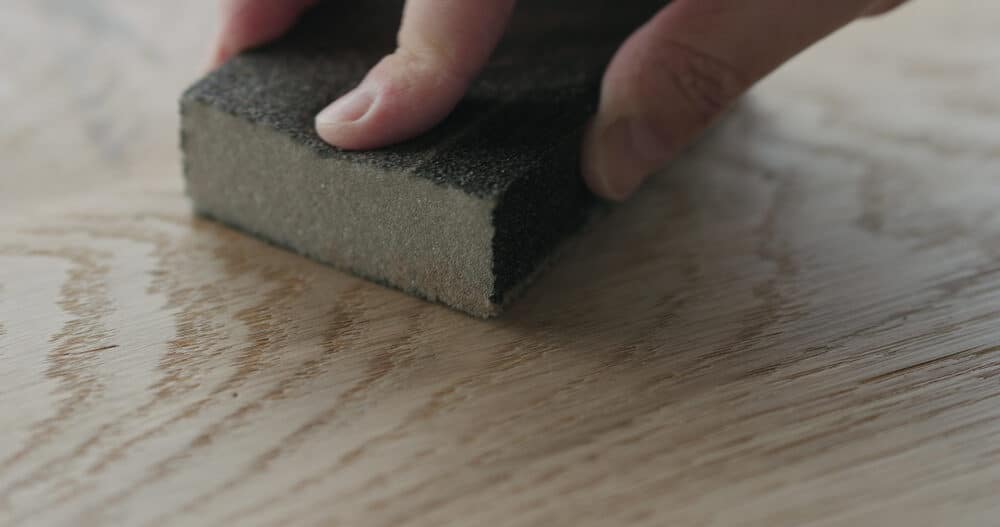
4. Apply consistent pressure
- Apply even pressure while sanding. Too much pressure can gouge the wood, while too little won’t effectively remove the old finish or smooth out the surface.
5. Check your progress
- Regularly wipe the surface with a clean, dry cloth to remove dust. This allows you to check your progress and ensure an even finish.

6. Change sandpaper often
- Don’t overuse sandpaper. Once it’s worn out, it becomes less effective and can lead to uneven sanding. Change your sandpaper frequently for the best results.
7. Take Your Time
- Hand-sanding is a gradual process. Rushing can lead to mistakes or uneven finishes. Take your time for a consistent and high-quality result.
8. Protect yourself
- Wear a dust mask and safety glasses to protect yourself from wood dust. Ensure good ventilation in the area where you are sanding.
9. Finish with the Finest Grit
- End with the finest grit sandpaper for a smooth surface, which is crucial for the even application of stains or sealants.
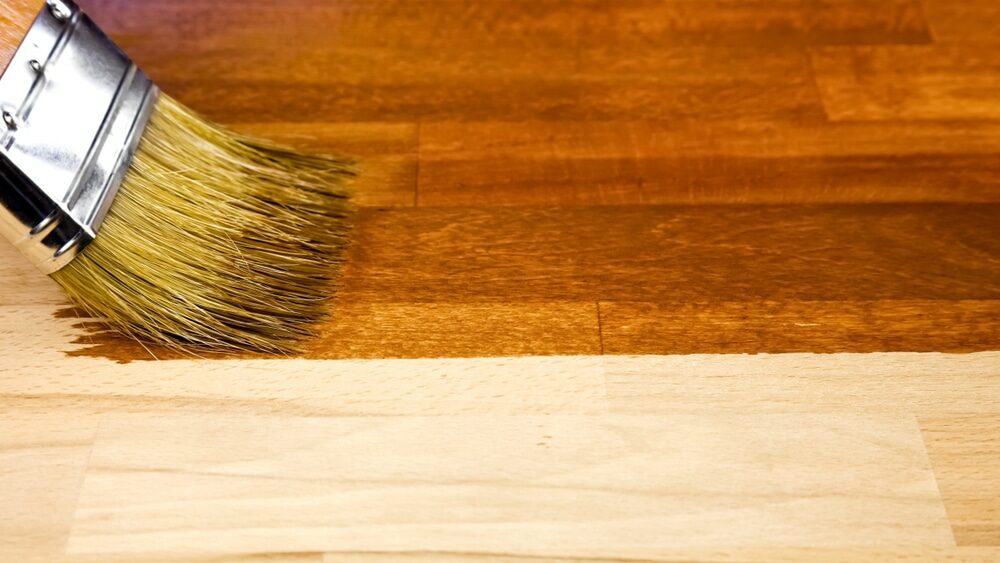
10. Clean thoroughly after sanding
- After completing the sanding, clean the floor thoroughly to remove all dust. A tack cloth or a vacuum designed for fine dust can be very effective.
11. Practice and Patience
- If you’re new to hand-sanding, practice on a scrap piece of wood. Understand how different grits affect the wood and get a feel for the pressure required.
12. Inspect as You Go
- Frequently stop and inspect the floor from different angles to check for consistency and any missed spots.

By following these tips, you can enhance your wood floor hand sanding technique, leading to beautifully restored wood floors that showcase the effort and care put into them. Hand sanding is not just about the end result; it’s about the process and the satisfaction of preserving and enhancing the natural beauty of wood with your own hands.
Conclusion
Hand-sanding wood floors is a testament to the value of traditional craftsmanship and attention to detail. This method, while time-consuming and requiring a significant amount of effort, offers numerous benefits that are hard to replicate with mechanical means. It allows for precision and control, ensuring that every inch of the floor is treated with the respect it deserves. The ability to maintain the authenticity of the wood, preserve its unique characteristics, and extend its lifespan makes hand sanding an invaluable practice in the world of wood floor restoration.
Moreover, its eco-friendly nature aligns well with contemporary concerns about environmental sustainability. Hand sanding minimises energy consumption, reduces dust and emissions, and encourages the use of fewer chemicals. This approach not only benefits the environment but also promotes healthier living spaces.
The comparative analysis between hand sanding and machine sanding highlights that the choice largely depends on the specific requirements of the project, the condition of the wood, and personal preferences. However, for those who value the integrity of their wood floors and seek a more environmentally conscious method, hand sanding stands out as the superior choice.
In conclusion, embracing the art of hand sanding is more than just a practical decision; it’s a commitment to preserving history, cherishing craftsmanship, and making eco-friendly choices. Whether you are a DIY enthusiast or a professional woodworker, the practice of hand sanding not only enhances the beauty and longevity of wood floors sanding but also connects you to the time-honoured tradition of working with wood in its most authentic form.

Sanding
We provide virtually dust-free sanding with our continuous belt machinery with mobile extraction units, giving you a safer environment for your family.
Oiling
This organic finish not only adds beauty to your home but also has exceptional water-repellent characteristics, making it easier to clean and maintain.
Waxing
This natural floor finish offers the softest and most mellow appearance – and leaves your floor able to breath.
Buffing
Using soft buffing machines (and hand-polishing where required) will bring a wonderful sheen to your newly-finished floor.
Repairs
We offer a full assessment of your wooden floors to determine what repairs are needed to provide the perfect working surface for the later stages of sanding, staining and sealing.
Restoration
We offer a comprehensive restoration process designed to address floors that are improperly fitted or damaged over time through wear and tear.
Request a fixed price quote for your wood floor restoration now
Simply enter your postcode below to get started.
Services
Wood Floor Sanding Wood Floor Restoration Wood Floor Scratch Repair Squeaky Wood Floor Repair Parquet Floor Sanding Parquet Floor Restoration Commercial Floor Sanding Church Floor Sanding Community Centre Floor Sanding School Floor Sanding Gap Filling Gap Filling with ResinCopyright © Mr Sander®
Privacy & Cookies Terms & Conditions Complaints Procedure Cancellation Rights Sitemap